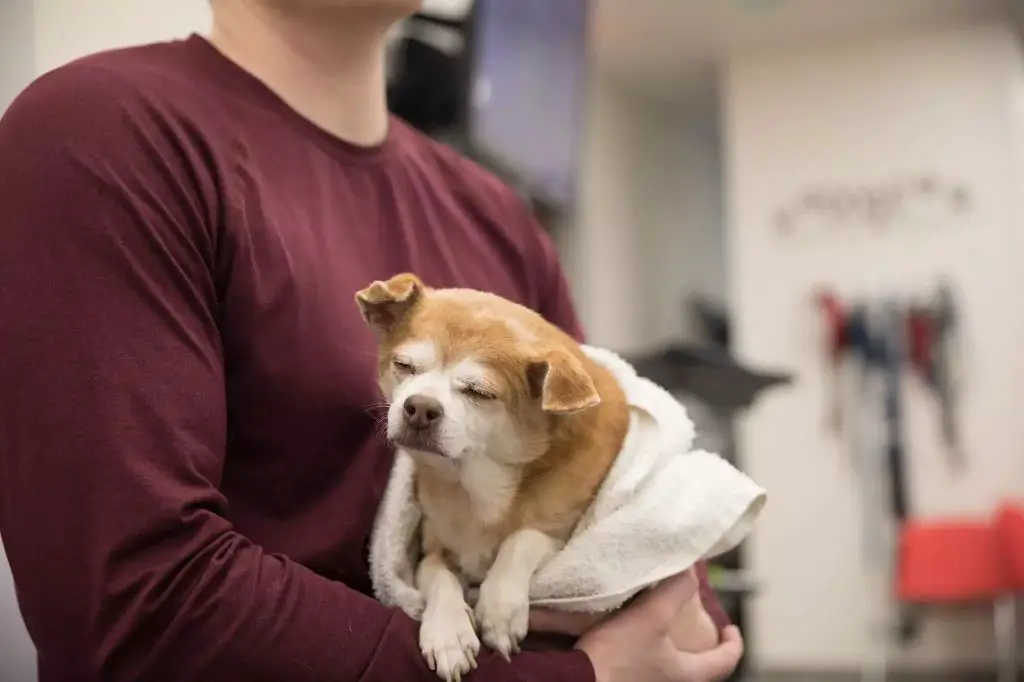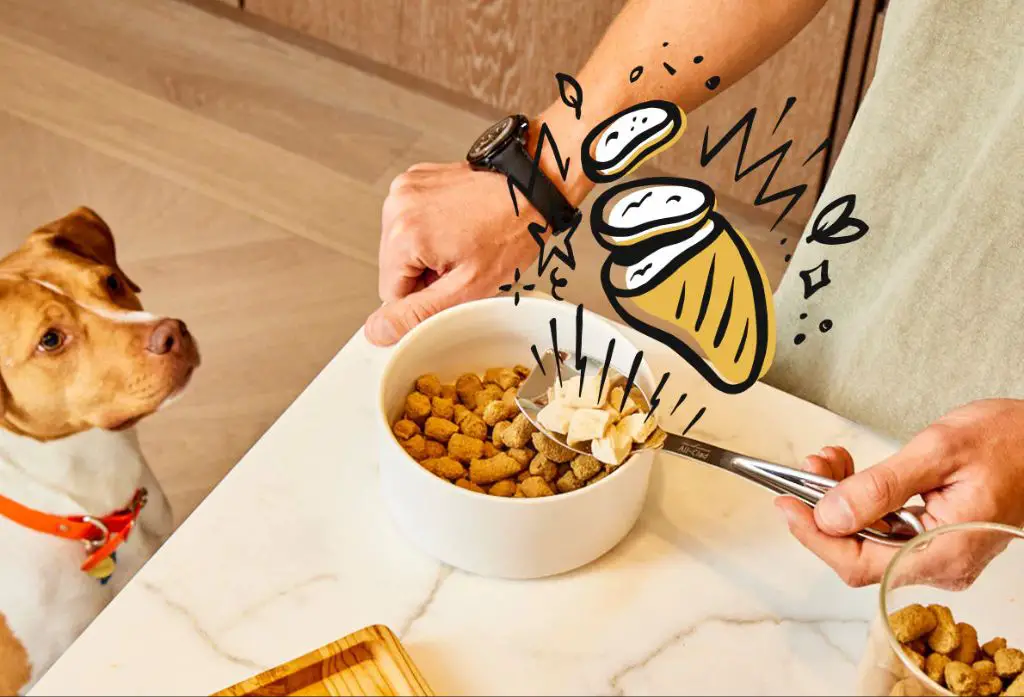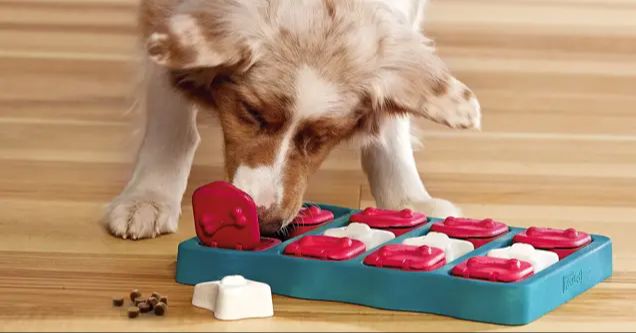Introducing the topic of dogs who don’t eat
As a dog owner, it can be concerning when your furry friend doesn’t seem interested in eating their food. A dog refusing food is not necessarily cause for alarm, but it can indicate an underlying health issue. Knowing when to be concerned and when it’s likely just a behavioral quirk requires understanding common reasons behind changes in appetite.
This article covers the main reasons a dog may turn down their meal, how long dogs can safely go without eating, potential health risks of not eating, when a vet visit is warranted, ways to encourage picky eaters, and guidelines on when to take away uneaten food. The goal is to provide dog owners with comprehensive information to determine the right approach if their dog is being finicky or lacks interest in their food.
Reasons Dogs May Not Eat
There are several common reasons why dogs may not eat their food. Three main causes involve illness, dental issues, and stress.
Your dog may refuse food due to illness if they are experiencing nausea, a sore throat, or other discomfort that makes eating painful. Certain diseases like kidney failure or cancer can also decrease appetite. If your dog is acting lethargic along with not eating, it’s a good idea to get them checked out by a vet.

Dental problems like mouth sores, broken teeth, or gingivitis can make it uncomfortable for dogs to pick up and chew their food. Senior dogs are especially prone to dental disease which impacts their ability to eat. If your dog is dropping food, hesitating to eat crunchy kibble, or showing other signs of dental pain, a dental exam would be advisable.
Stress and anxiety can be another factor leading to appetite loss in dogs. Things like schedule changes, travel, new people or animals in the home, loud noises like thunderstorms or fireworks, or spraying during training can cause stress that makes a dog not want to eat. Try to minimize stressful triggers and stick to your dog’s normal routine if they are refusing meals due to stress.
How long can dogs go without eating?
How long a dog can go without eating depends on several factors including their age, health status, and environment. Puppies and older dogs may only be able to go a day or two without food before becoming hypoglycemic. Healthy adult dogs, on the other hand, can survive up to 5 days without food as long as they have access to water. Dogs with medical conditions like diabetes, cancer, or gastrointestinal issues may not be able to go more than a day or two without eating before complications set in.
The environment also plays a role. Dogs kept in temperate climates with shelter can go longer without food than dogs exposed to extremes of hot or cold. Lactating and pregnant females also require more frequent meals. As a general rule, most healthy adult dogs should never go more than 2 days without a meal before it becomes a concern. Puppies, seniors, sick or debilitated dogs should be fed at least once daily without exception. If your dog goes longer than this without eating, it’s important to call your veterinarian.
Dangers of not eating
Dogs who go too long without eating risk developing some serious health conditions. Two of the most concerning dangers of prolonged lack of food are hypoglycemia and liver problems.
Hypoglycemia, or low blood sugar, can quickly develop in dogs who miss too many meals. Just like humans, dogs need a regular intake of nutrients to maintain normal blood sugar levels. Without sufficient food consumption over time, blood sugar crashes and dogs can experience lethargy, weakness, tremors, and seizures. Hypoglycemia can come on rapidly and may progress to a life-threatening emergency.

Going a long time without eating can also put stress on the liver. The liver stores glycogen to help maintain normal blood sugar when no food is being digested. If a dog fasts for an extended period, the liver’s glycogen stores can become depleted. This may lead to a serious condition called hepatic lipidosis, which causes liver failure. Hepatic lipidosis requires intensive veterinary treatment and supportive care.
In addition to hypoglycemia and liver disease, dogs who refuse food for a prolonged time period are at risk for developing other health problems. Significant weight loss, vitamin/mineral deficiencies, and organ dysfunction may occur. It’s critical to identify why your dog is not eating and remedy the situation before dangerous consequences arise.
When to call the vet
If your dog is refusing to eat for over 24 hours, it’s important to call your vet, especially if they are showing concerning symptoms. Lethargy, vomiting, and diarrhea can all be signs of a serious underlying issue that requires veterinary attention.
A complete loss of appetite in dogs is abnormal. If your dog hasn’t eaten at all for over a day, is vomiting, has diarrhea, seems more tired than usual, or just seems generally unwell, don’t hesitate to call your vet or take them into the clinic. These symptoms in combination with not eating are red flags for potentially serious health problems.
Some possible reasons your vet may want to see your dog sooner rather than later include: intestinal blockages, viral infections, kidney problems, liver disease, cancer, and other conditions. It’s always better to be safe than sorry when your dog is refusing food and feeling under the weather. Your vet can run tests to determine if there is an underlying issue that needs treatment.
While you don’t need to panic if your dog skips a meal, a complete loss of appetite for more than 24 hours warrants a visit to the vet, especially if you notice additional symptoms like diarrhea, vomiting, or lethargy. It’s important to get veterinary advice to ensure there is no serious medical issue at hand.
Trying Different Foods
If your dog is bored with their usual kibble, there are some simple ways to spice up mealtime and encourage better eating. One option is to warm up the food slightly in the microwave for 10-15 seconds. This brings out more aroma and makes the food more appetizing. You can also try adding a spoonful of wet dog food, low sodium chicken broth, pumpkin puree, or plain yogurt. The extra mix-ins make the kibble more tasty and interesting.
Switching up your dog’s protein sources can help as well. If your dog usually eats chicken or beef flavored kibble, try finding a fish or lamb recipe instead. Rotating through different proteins keeps things fresh and prevents taste fatigue. You can even look for kibbles with multiple protein sources like chicken, lamb, and salmon. Just check that any new foods match your dog’s health needs and sensitivities.

The key is finding ways to make your dog excited about eating again. A little extra flavor, aroma, or novelty can go a long way in improving your pup’s appetite and interest at mealtimes.
Ruling out health issues
If your dog is not eating for an extended period, it’s important to rule out any underlying health issues. Some tests your vet may recommend include:
-
Bloodwork – Checking blood cell counts, electrolyte levels, kidney and liver function can uncover issues like infections, pancreatitis, kidney disease, cancer and more.
-
Physical exam – Your vet will thoroughly examine your dog’s body for signs of pain, dental disease, masses, and other issues that may cause inappetence.
-
Diagnostic imaging – X-rays, ultrasounds, or CT scans of the abdomen can uncover gastrointestinal obstructions, inflammatory bowel disease, organ enlargement, and tumors.
By having your dog thoroughly evaluated, you can identify and treat any medical conditions contributing to the lack of appetite. Your vet can also advise you on next steps to encourage eating once health problems are addressed.
Creating a feeding schedule
One of the best things you can do if your dog is not eating is to create a consistent feeding schedule. Feeding your dog at the same times every day will help create a routine that their body can adapt to. It will also help you monitor how much they are eating each day.
When creating a schedule, set specific meal times in the morning and evening and stick to them. Pick up any uneaten food after 15-30 minutes so your dog understands that food won’t be available at all times. This will encourage them to eat when the food is presented at meal times.
Having a routine allows you to see if your dog stops eating at a certain time or on certain days. That information can help identify any underlying issues. It also prevents grazing and overeating by limiting access to food.
Be patient when transitioning to a new schedule. It may take some time for your dog to adjust. But a consistent feeding routine will typically improve appetite and eating habits.
Using Food for Training
Using your dog’s regular food is an excellent way to reinforce behaviors during training. There are several methods to try:
-
Hand feeding – Feed part or all of your dog’s meals directly from your hand. As your dog politely takes the kibble, reinforce behaviors like sitting, making eye contact, and remaining calm.
-
Food puzzles – Place your dog’s food in a puzzle toy or hidden around the house. Your dog will need to problem solve and use their brain to access the kibble, providing mental enrichment.
-
Training treats – Use your dog’s kibble as training treats during short sessions. Kibble is low calorie and most dogs are highly motivated by their own food. Reward your dog with kibble as you train basic obedience cues or tricks.

Turning regular meals into a game or training opportunity provides physical and mental exercise. It also helps build your bond as your dog earns food directly from your hands.
When to Take Uneaten Food Away
The general rule of thumb is that if your dog doesn’t finish their meal within 15-30 minutes, you should pick up the leftover food and take it away. This helps prevent your dog from developing a grazing habit where they keep coming back to nibble throughout the day. Grazing can lead to obesity and make it harder to stick to a structured feeding schedule.
After 15-30 minutes, the uneaten portion should be discarded or sealed and refrigerated. Leaving food out longer than that risks it spoiling or attracting rodents/insects. It also enables your dog to sneak bites whenever they feel like it. Portion control is important for your dog’s health.
Taking food away reinforces mealtimes rather than free feeding. This prevents overeating and teaches your dog not to be picky, knowing the food will not be available indefinitely. It helps keep their appetite primed for the next mealtime as well.
However, if your dog is sick, old, very young or is on medication, you may need to leave food available for longer. Check with your veterinarian if your dog is having appetite issues or not finishing meals. But for the average healthy dog, uneaten wet or dry food should be discarded after 15-30 minutes.